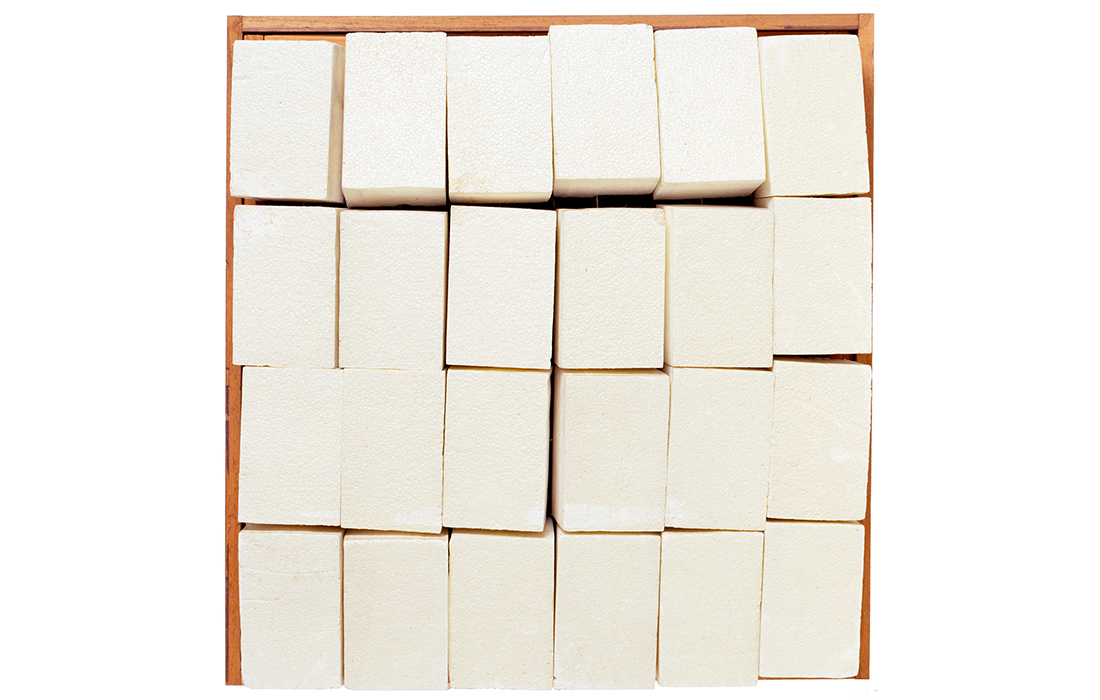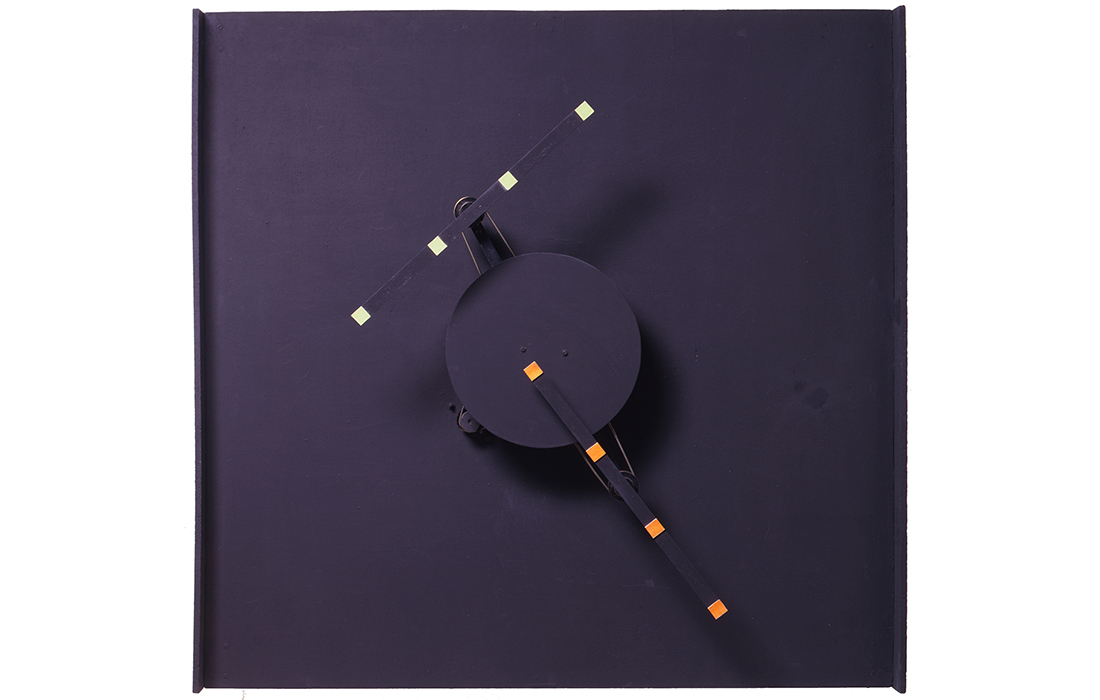October – November 2010
Gianni Colombo is the example of the natural evolution of our taste that is formed from the study and rediscovery of many artists of the fifties.
A common history that the Gallery brings forth, for more than fifteen years, together with Collectors and enthusiasts who follow the path from the informal to the three-dimensional pieces, collecting the contributions of significant excellence from every moment in history.
The second is the direct relationship with the conceptual leap of the fruition of artistic work.
Gianni Colombo represents a step forward, making the viewing area completely accessible, allowing a jointly held vision of the observer. The collector is therefore also allowed the interaction, an “intermutable” way, paraphrasing the titles of individual Works, perceptual and manual.
The third point regards the perfect counterpoint with his and our time.
In total harmony with great international architects, from Eames to Wright, in keeping with the development of his century, and in consonance with the vision of the undersigned, Gianni Colombo expressed in Art, that which in architecture was being said otherwise but in global concert with the avant-garde spirit of the time.
Yet, his works are an exasperated contemporary.
Gianni Colombo writes on the occasion of his private exhibit “Miriorama 4” from Pater, Milan, February 9, 1960: “I think that only in the variation an object shows its appearance and would highlight its character by leaving the uniformity from the space from which it is surrounded, in fact through the time component we experience reality which cannot be expressed in its fullness in static formal symbols. […]
For some time I began to establish elevation changes in the “picture-object” area, in a way that the viewer’s eye, running along the surface, was somehow forced to go up and down the depth, to enter and exit the cavity investigating the aspects that the light, in natural variation, determined in the painting.
Only in the paintings that now expose a real there is a simultaneous effect with the eye (and humor) of the observer. Today, give my paintings the possibility that they may be implemented only at the speed at an unpredictable succession, so the disturbance of the uniformity of these surfaces can represent truly amazing drama.”
Taking a closer look, since this programmatic statement includes the turning point but more the fate that Colombo gives to his work.
The physical objectivity of the work and the physiology of the perception, even aesthetics compared to current expectation codes, active and complicit participation of the viewer in giving the work a trait-d’union of the aesthetic experience, mildly random situation: above all, the strong and full involvement of the temporal dimension in a process which, up until that point, in space and duration, psychological instead of physical, of the experience based on its value systems: this is the choice of Colombo.
The climate is known. It is that which the second number of Azimuth tends to configure as New artistic conception.
It is the lesson of Fontana and the recovery of kinetics proclaimed by the exhibition “Le movement” at Denise René, 1955; it is contamination with the methodology of new applied arts as was announced in that fateful 1960, the “Animated and multiplied works of art” exhibition by Danese in Milan, and again the experimental on the edge of the Duchamp reinvention by Manzoni, young master but master nonetheless, in terms of blankness, raw designation of materials, relationship with the code pushed to its dissolve.
An atypical work such as that Untitled, 1960, based on the estranged indifference of imitation, the minimal geometric cadence of the stitching, the objectifying growth not mindful of the Gobbi burriani, is emblematic of these early works because they are atypical compared to the others, contemporary clarities, those that generated major works since 1959, among which sticks out, for conceptual clarity and formal power, the Arrangements buttons.








